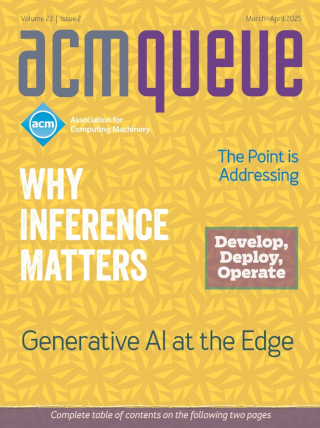Understanding Software Patching:
Developing and deploying patches is an increasingly important part of the software development process.
Software patching is an increasingly important aspect of today’s computing environment as the volume, complexity, and number of configurations under which a piece of software runs have grown considerably. Software architects and developers do everything they can to build secure, bug-free software products. To ensure quality, development teams leverage all the tools and techniques at their disposal. For example, software architects incorporate security threat models into their designs, and QA engineers develop automated test suites that include sophisticated code-defect analysis tools.
UML Fever: Diagnosis and Recovery:
Acknowledgment is only the first step toward recovery from this potentially devastating affliction.
The Institute of Infectious Diseases has recently published research confirming that the many and varied strains of UML Fever1 continue to spread worldwide, indiscriminately infecting software analysts, engineers, and managers alike. One of the fever’s most serious side effects has been observed to be a significant increase in both the cost and duration of developing software products. This increase is largely attributable to a decrease in productivity resulting from fever-stricken individuals investing time and effort in activities that are of little or no value to producing deliverable products. For example, afflictees of Open Loop Fever continue to create UML (Unified Modeling Language) diagrams for unknown stakeholders.
Software Needs Seatbelts and Airbags:
Finding and fixing bugs in deployed software is difficult and time-consuming. Here are some alternatives.
Like death and taxes, buggy code is an unfortunate fact of life. Nearly every program ships with known bugs, and probably all of them end up with bugs that are discovered only post-deployment. There are many reasons for this sad state of affairs.
Patching the Enterprise:
Organizations of all sizes are spending considerable efforts on getting patch management right - their businesses depend on it.
Software patch management has grown to be a business-critical issue—from both a risk and a financial management perspective. According to a recent Aberdeen Group study, corporations spent more than $2 billion in 2002 on patch management for operating systems.1 Gartner research further notes the cost of operating a well-managed PC was approximately $2,000 less annually than that of an unmanaged PC.2 You might think that with critical mass and more sophisticated tools, the management cost per endpoint in large organizations would be lower, though in reality this may not be the case.
A Conversation with Tim Marsland:
Taking software delivery to a new level
Delivering software to customers, especially in increments to existing systems, has been a difficult challenge since the days of floppies and shrink-wrap. But with guys like Tim Marsland working on the problem, the process could be improving.




